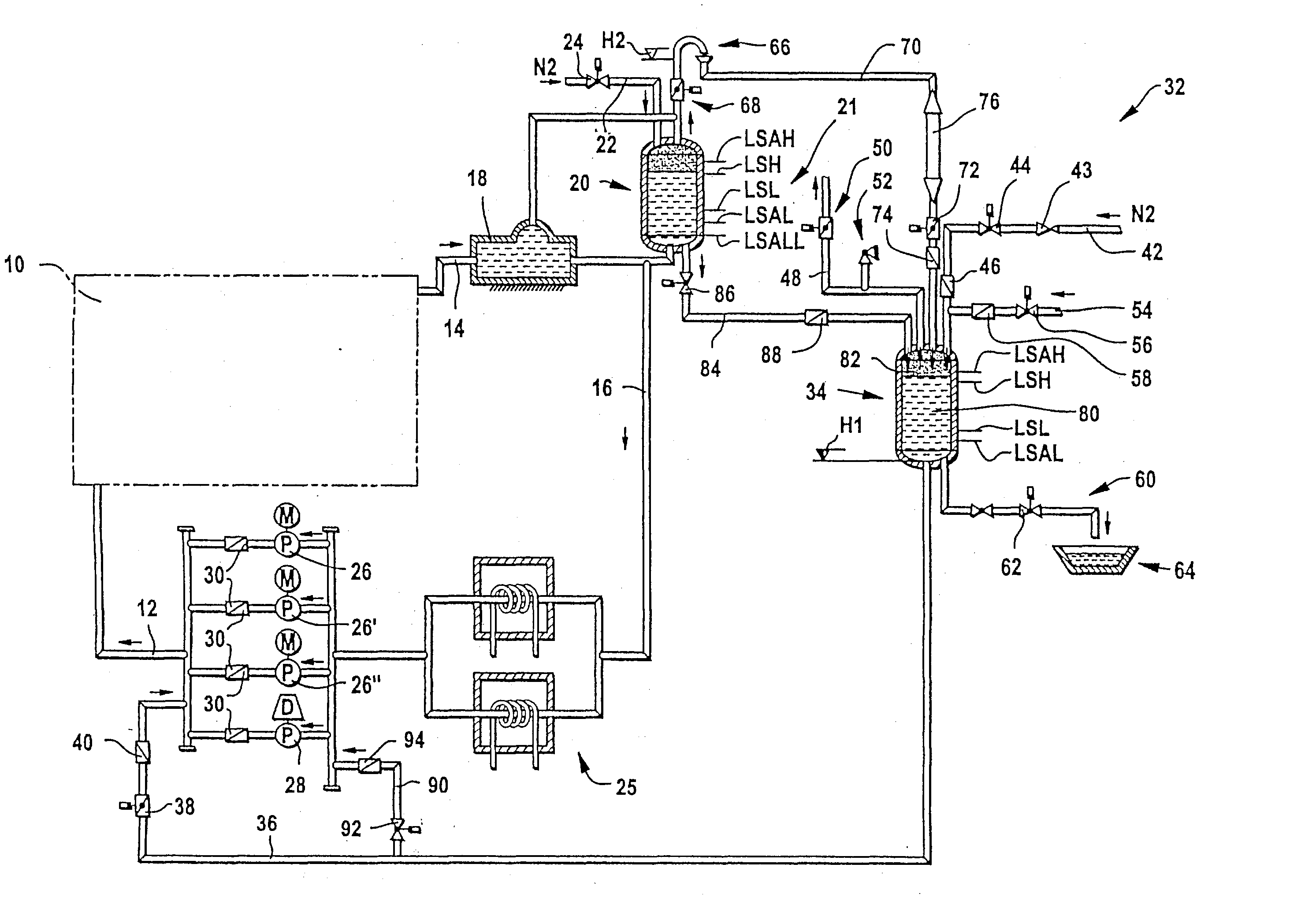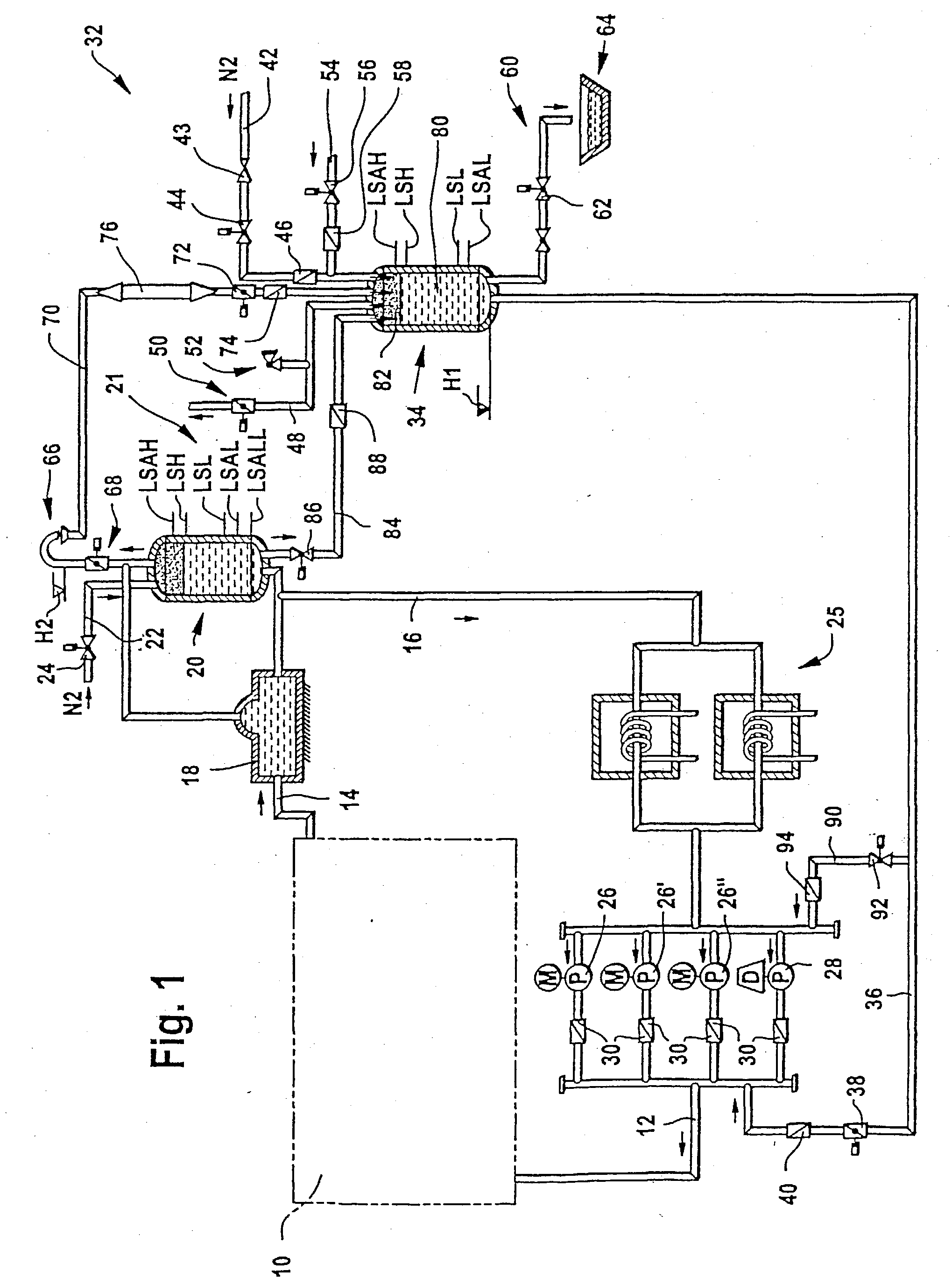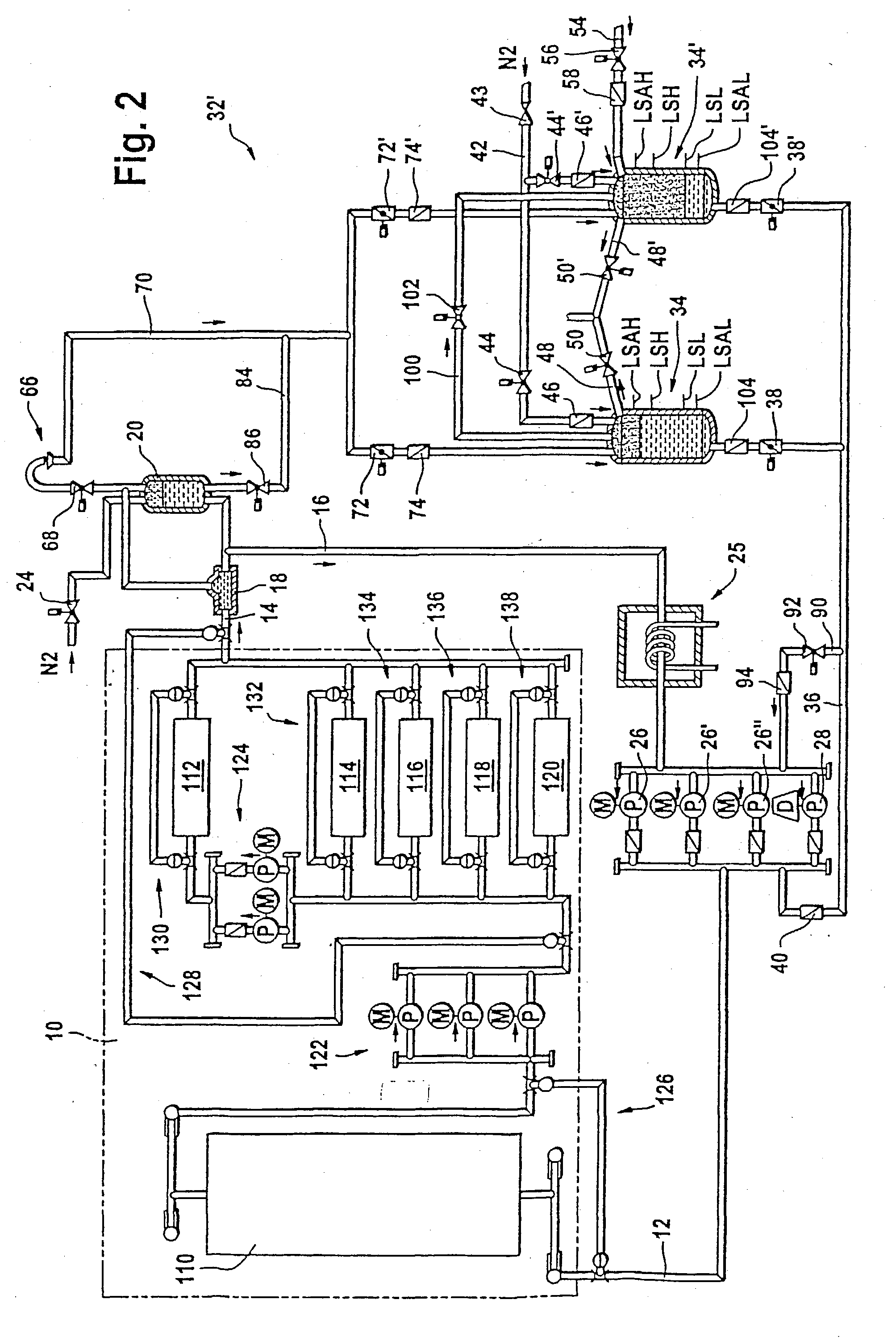Cooling system for a metallurgical furnace
a technology of metallurgical furnace and cooling system, which is applied in the direction of furnaces, indirect heat exchangers, lighting and heating apparatus, etc., can solve the problems of positive repercussions on the quality of the water in the tank, and achieve the effect of reducing the time between two successive discharges, and ensuring the reliability of emergency cooling
- Summary
- Abstract
- Description
- Claims
- Application Information
AI Technical Summary
Benefits of technology
Problems solved by technology
Method used
Image
Examples
Embodiment Construction
[0020] In FIG. 1, reference number 10 indicates a blast furnace cooling circuit comprising an inlet 12 and an outlet 14 for the cooling water. This cooling circuit 10 regroups the elements of the blast furnace to be cooled, i.e. the cooling staves and cooling boxes of the furnace walls, the tuyeres and hot blast equipment. A return line 16 connects the outlet 14 to the inlet 12, so as to form a closed cooling circuit. Near the outlet 14, at the top of the blast furnace, the return line 16 includes a degasser 18, wherein the heated cooling water is substantially freed from gas. At this highest point of the cooling water circuit 10 is also located a closed expansion vessel 20, which can be pressurised by a pressurised gas (e.g. N.sub.2) through a conduit 22 and a valve 24. This gas helps to warrant that the pressure in the cooling circuit is high enough, so that there is no risk of evaporation of the cooling water within the cooling circuit 10. The expansion vessel 20 is furthermore e...
PUM
| Property | Measurement | Unit |
|---|---|---|
| diameter | aaaaa | aaaaa |
| atmospheric pressure | aaaaa | aaaaa |
| volume | aaaaa | aaaaa |
Abstract
Description
Claims
Application Information
 Login to View More
Login to View More - R&D
- Intellectual Property
- Life Sciences
- Materials
- Tech Scout
- Unparalleled Data Quality
- Higher Quality Content
- 60% Fewer Hallucinations
Browse by: Latest US Patents, China's latest patents, Technical Efficacy Thesaurus, Application Domain, Technology Topic, Popular Technical Reports.
© 2025 PatSnap. All rights reserved.Legal|Privacy policy|Modern Slavery Act Transparency Statement|Sitemap|About US| Contact US: help@patsnap.com



